A Fantastic Elsewhere is the evocative title of the exhibition that enlivens the rooms of the Palazzo Senza Tempo, in the heart of Peccioli, until October 19, 2025, inviting us to “cross the things of the world,” the guiding theme of the 2025 edition of Thought Peccioli. A deep and sensitive immersion in that elsewhere that Lorenzo Mattotti (Brescia, 1954) builds with his unmistakable style and imagery consisting of fantastic creatures, fairy-tale landscapes, talking animals and forests of the soul.
Mattotti does not illustrate. His images do not decorate the stories, but reveal them, amplify them. In his works the colors explode, the lines twist, the black shines, the stroke becomes strong and then light, in a harmony that speaks to the child we have been and to what we may yet become again. An elsewhere that is not escape, but return: to the origin, to wonder. To plunge with new eyes into the things of the world, to discover that perhaps elsewhere has never been so close.
Through eight sections, like eight stages of an initiatory journey, the exhibition traces the career of one of the most beloved contemporary illustrators, capable of moving among the great myths of fantastic literature with a recognizable style, never didactic, always evocative. From the enchanted darkness of Hansel and Gretel to the raw, animalistic universe of My Stupid Intentions, via the Freud-inspired psychoanalytic visions and dreamlike compositions of The Raven, each room is a world unto itself, a threshold to cross.
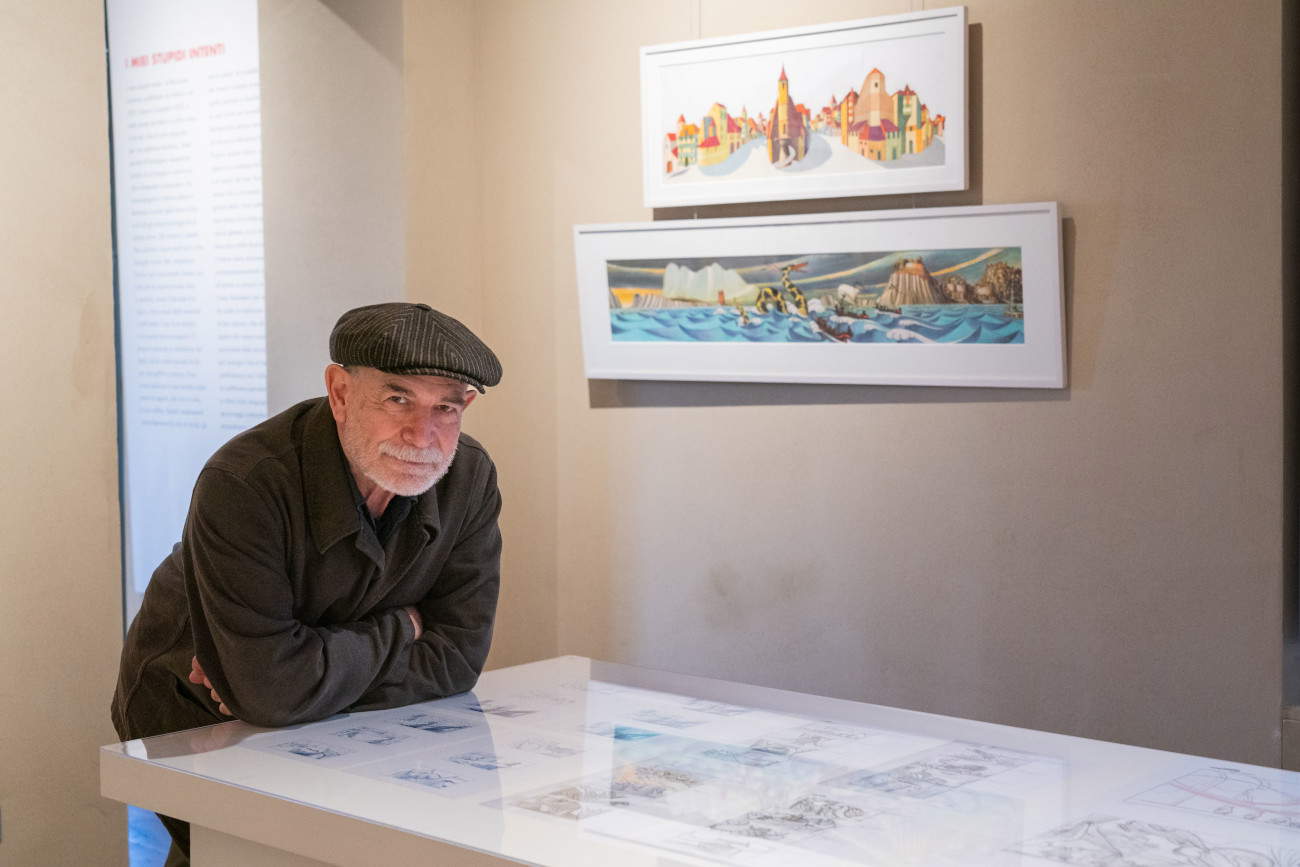

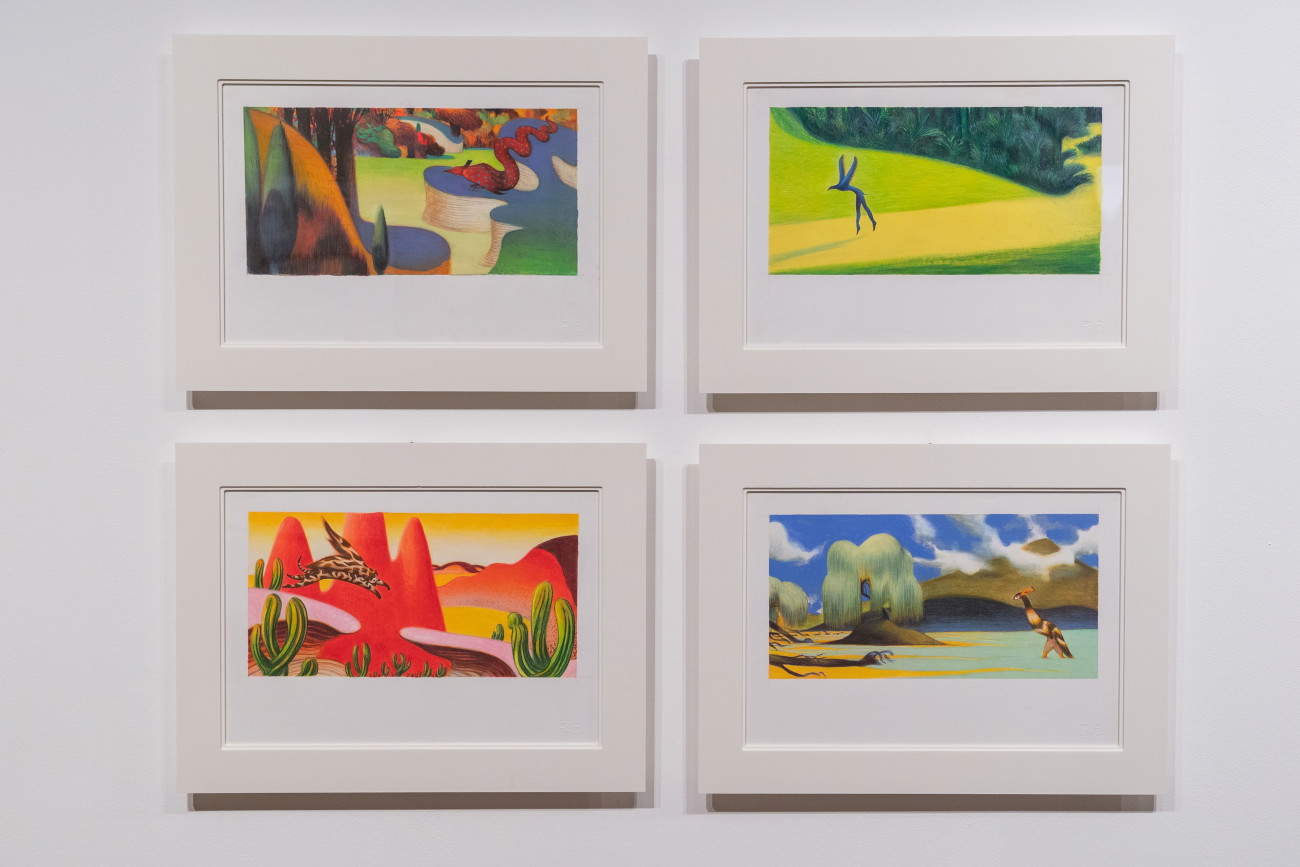
In The Ancient Creatures, which grew out of a project for an Eni calendar, Mattotti imagines a mythical bestiary moving through dreamlike landscapes.“Initially I responded by proposing a series of fantastic landscapes in which the famous six-legged dog, symbol of the company since 1953, went out to discover the world. Although the design did not convince the client, I remained faithful to my initial idea, creating a new series of mythically inspired fantastic animals wandering in dreamlike landscapes-the future images of the 2004 Eni calendar,” Mattotti explained. Thanks to a collaboration with Jerry Kramsky in 2007, the project then expanded and became a children’s story, Il Mistero delle Antiche Creature (Orecchio Acerbo, 2007), in which color plates alternate with a narrative frame in ink. In Gulliver, presented for the first time in an exhibition at Peccioli, the artist gives form to the marvelous and absurd in Swift’s masterpiece, restoring all its ironic power with vibrant pencils and pastels. "With Jonathan Swift’s Gulliver’s Travels,“ he says, ”I discovered a rich and dense text that thrilled me as a reader and stimulated me as an artist. Gulliver’s adventures divided into four books-the main destinations visited by the protagonist-are a lively parody and critique of the society, conventions and human behavior of the author’s time. Swift’s invented intrigues pave the way for a wonderful and absurd visual world that I have played at putting into pictures. The pencil plates and colored crayons render a grotesque world, in which the central episodes are depicted not without a stroke of irony, necessary to paint the baser features of human nature." Created at the urging of Einaudi publishers for the new translation of The Travels of Gulliver, the project is forthcoming.
The Raven (Einaudi, 2009), Mattotti later confesses, shows the most disturbing and restless part of his personality. Lou Reed was looking for an illustrator to collaborate with on his interpretation of Edgar Allan Poe’s tale. After the release of his album The Raven, Reed had mounted a show with Robert Wilson about the narrative poem. Reed had admired Mattotti’s interpretation of Dr. Jekyll & Mr. Hyde and therefore wanted to propose that he adapt his lyrics in color.
Instead, for his version of The Adventures of Pinocchio (Bompiani, 2019), Mattotti combined styles and techniques for the first time in an editorial project: “lumpy wax crayons, games of shadows, of movements and bodies. Characters that merge with the landscape; in my Pinocchio everything becomes volume, acquires weight and substance, exuding restlessness. Pinocchio experiences extreme adventures. He runs, he escapes, as in the cover, and above him something looms menacingly. Here, my Pinocchio finds no peace, always circling restlessly,” he said. His relationship with the story of Pinocchio, which despite being considered a myth of Italian literature as a child did not fascinate him, began almost by chance, at the request of a gallery-bookstore in Bologna, which had commissioned him to make two large drawings of Mangiafuoco and Pinocchio hanging from a tree. Then, at the same time, Jacques Binsztok, head of the “jeunesse” department of the Albin Michel publishing house, had republished the great children’s texts, and on that occasion, showing him the first two drawings, the project was off. “Adapting a rich text, which goes from strange and fantastic landscapes to realistic descriptions of the poverty of the Tuscan countryside, was not an easy task,” Mattotti confessed. “But the result was so well received by the public and critics that I was called upon to participate in other projects on this masterpiece of Italian literature. I conceived the set design, decorations and characters for Enzo D’Alò’s film. Then I moved on to illustrate other editions, including one in black and white for Einaudi. Then the various versions of Pinocchio, from the first color drawings to the black-and-white sketches to the research for the film, came together in a single edition,” the 2019 edition.
Instead,the famous invasion of the bears in Sicily, a beloved tale by Dino Buzzati, has become by Lorenzo Mattotti’s desire an animated film that preserves all the original poetry and enhances it with joyful, light-filled colors. “Five years of tireless and wonderful work,” he explained. “From the very beginning I was clear about the structure of the images. Turning The Famous Invasion of the Bears in Sicily into a screenplay was complicated. We needed a common thread and wanted someone to tell the story. Together with co-writers Thomas Bidegain and Jean-Luc Fromental, we invented the Sicilian storyteller Gedeone, the old bear, and Almerina, the little girl who grows up. This allowed us to summarize some passages of the story and advance the narrative without betraying it. The visual universe and the central images of the film, I conceived them quite easily. Buzzati’s drawing, much more naïve than mine, hides some very beautiful and effective graphic ideas that I integrated into my vision. His images helped me to have a stable base to work on in a more relaxed way. I worked closely with the production team and animators. It was a joint project,” he recalled, “in which all the talents involved contributed to the construction of the final result.”
"Hansel & Gretel was one of the few books whose graphic interpretation came naturally to me," the artist said instead about his Hansel & Gretel (Orecchio Acerbo, 2018). “The use of black and white ink to express the anxieties created an effect of immediacy. The images appeared to me almost instantaneously, as a logical follow-up to my personal research in recent years on the pictorial interpretation of the forest. These large, almost abstract compositions of foliage immersed in half-light became the ideal landscape in which to place the characters from the Brothers Grimm fairy tale.”
With Racconti Analitici (Einaudi, 2011), made at the suggestion of the Einaudi publishing house to accompany a new Italian translation of Sigmund Freud’s works, the artist faced the challenge of visually condensing Freudian thought, transforming complex concepts such as the unconscious and subconscious into powerful images. “In order to avoid turning myself into an exegete of Freudian thought, I let myself be carried away by the fantastic and delirious atmosphere of the evoked clinical cases, traversing the ”labyrinths of the mind“ that Freud was able to map,” he said. “Hence the deliberately ambiguous choice to create a visual universe seemingly contiguous to that of children’s books, a method I had already adopted elsewhere.” And then there is I miei stupidi intenti (Sellerio, 2023), for which Mattotti set out to create an illustrated edition of Bernardo Zannoni’s famous novel, Premio Campiello 2022. Sixty-six plates, five of which are in color and the others drawn in sanguine, accompany the reader into the fantastic world of the marten Archy and all the other animal protagonists. “At the center of my drawings is nature, raw and at the same time beautiful,” he says. “A nature as alive as the animals that inhabit it, in an atmosphere made unique by the illustrations, where the reader is accompanied and at the same time left free to create his own imagery.” As a reference for the illustrations, the artist chose the Anglo-Saxon tradition of the classical type, which gives ample space to nature as a characterizing element of the story.
In each room of A Fantastic Elsewhere, the audience is invited to allow themselves to be traversed. Mattotti’s Elsewhere asks us to return to see with amazed eyes, to reclaim an unanesthetized imagination, to rediscover through sign, color, form.
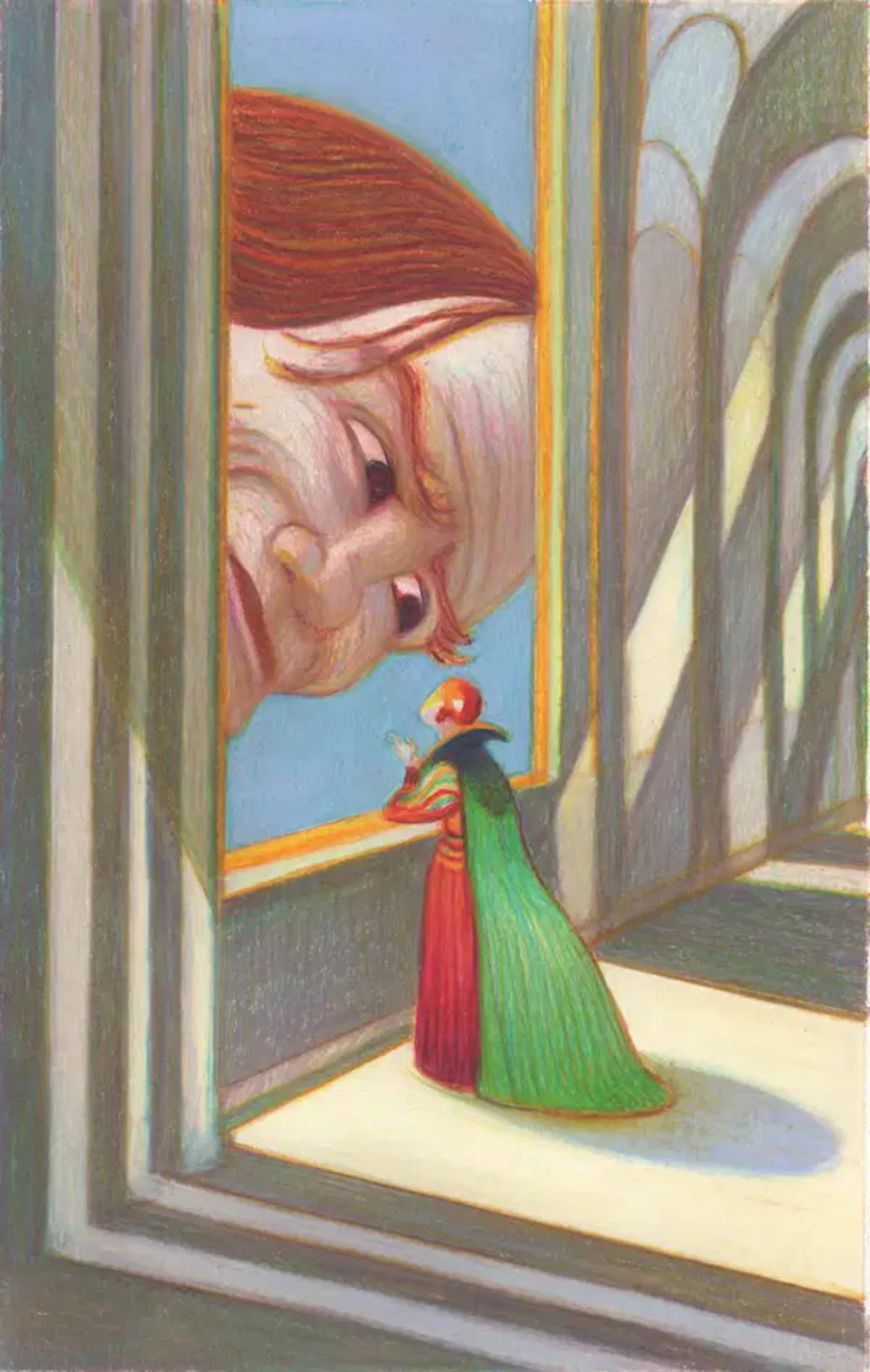
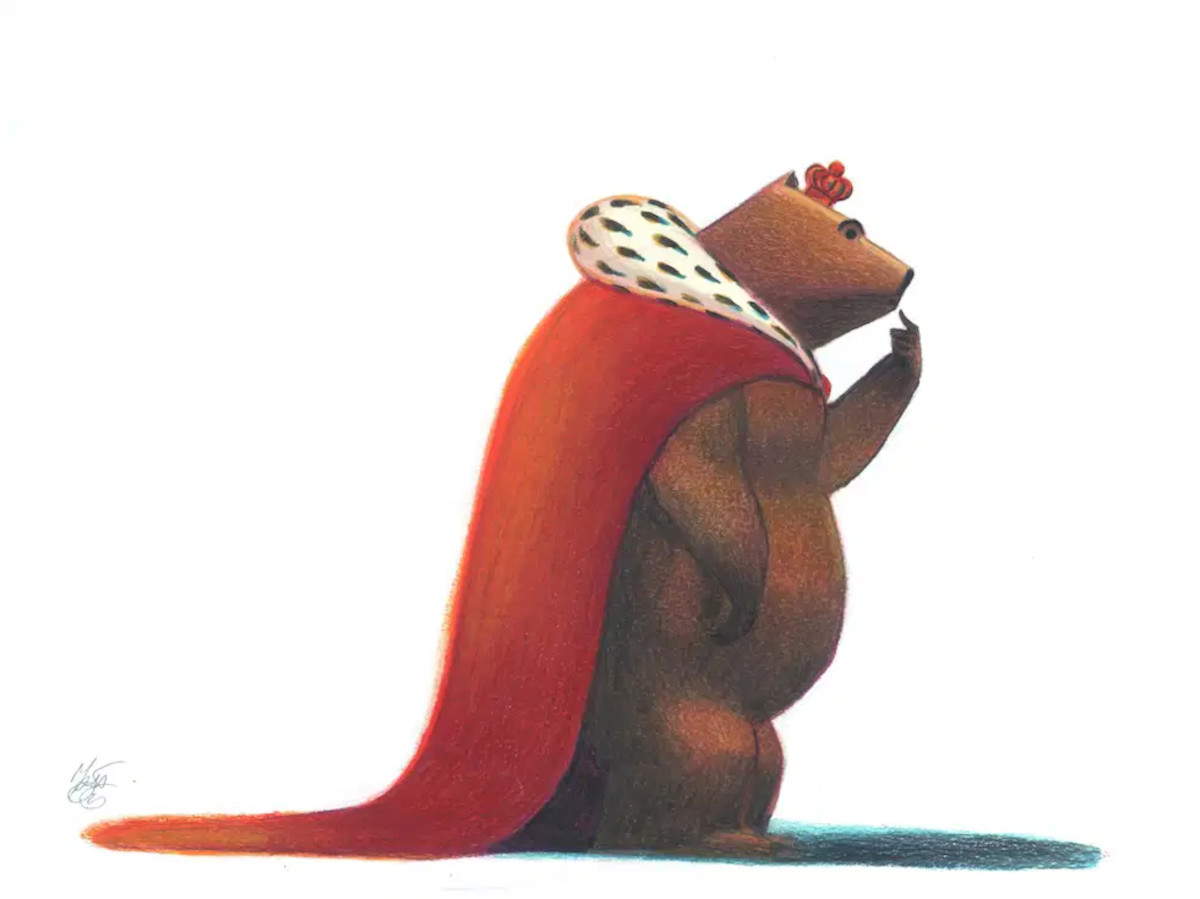
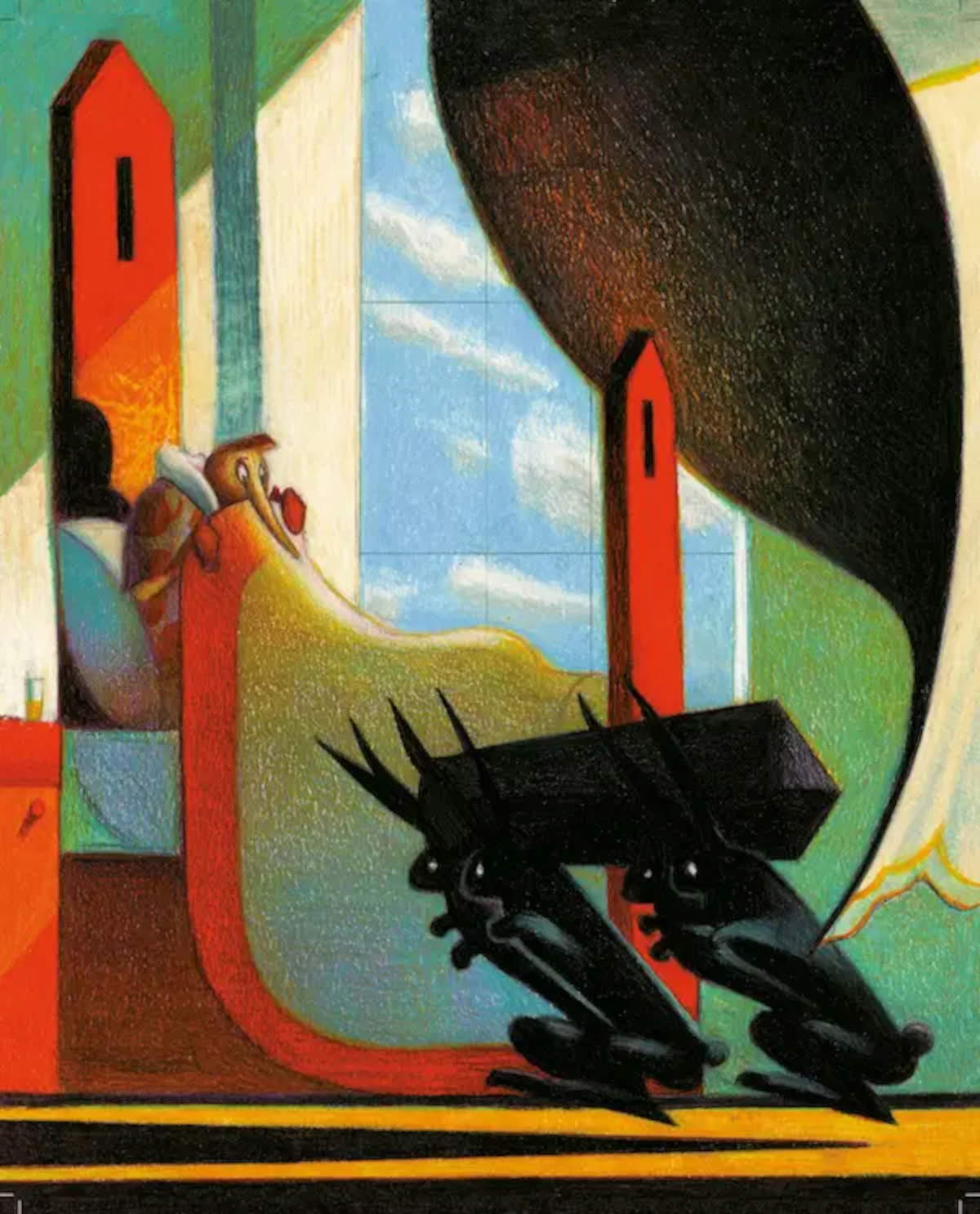
 |
| In Peccioli, the great classics of children's literature in the drawings of Lorenzo Mattotti, from Pinocchio to Gulliver |
Warning: the translation into English of the original Italian article was created using automatic tools. We undertake to review all articles, but we do not guarantee the total absence of inaccuracies in the translation due to the program. You can find the original by clicking on the ITA button. If you find any mistake,please contact us.